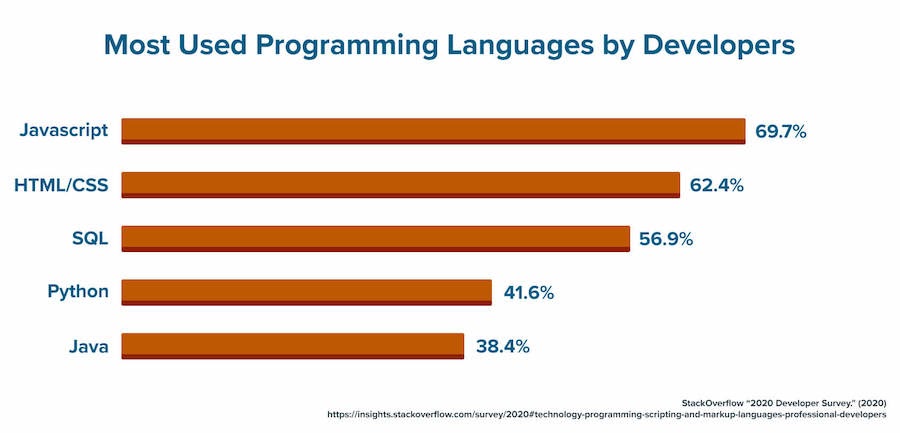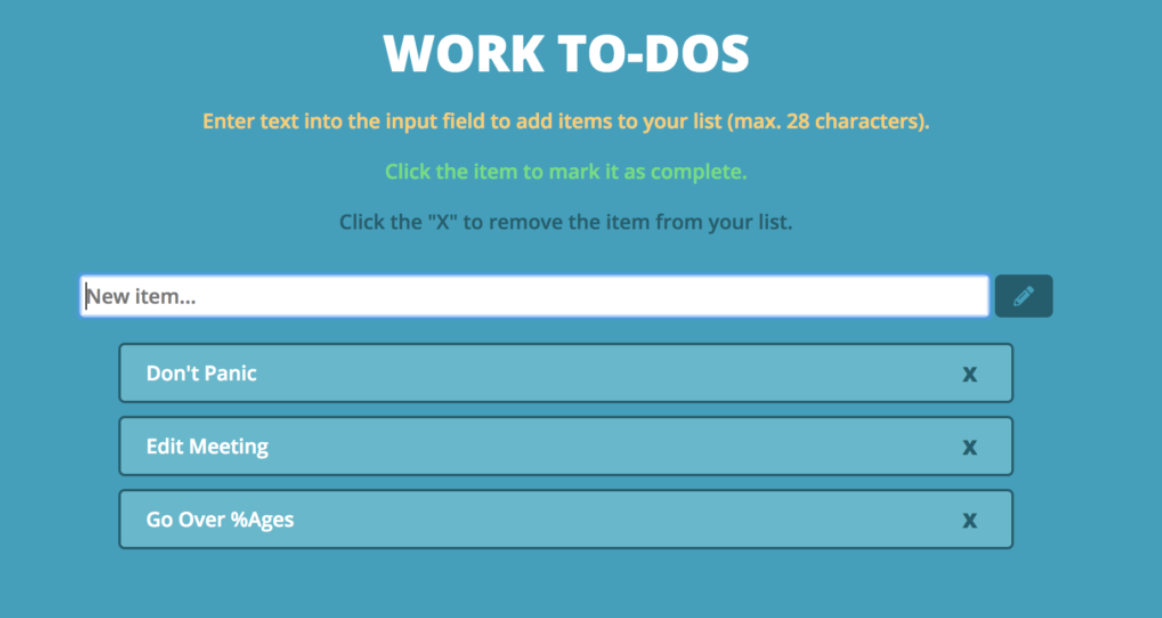For anyone interested in learning front end web development, it’s crucial to understand the difference between HTML, CSS, and JavaScript. Whether you’re booking a flight or figuring out what to make for dinner, these three front end languages are the user interface building blocks of every website you’ve ever visited. And, while each language has a different functional focus, they all work together to create exciting, interactive websites that keep users engaged. For this reason, you’ll find that learning all three languages is important.
If you’re interested in pursuing a career in front end development, there are a variety of ways to learn these languages — from coding bootcamps to college degrees. In this article, we will review the characteristics of each language, how they work together, and where you can learn them.
HTML vs. CSS vs. JavaScript: What’s the Difference?
While these three front end languages are all used to design websites, they each have their own specific uses and intricacies. For example, the main difference between HTML and CSS is that HTML creates the document structure of a webpage while CSS embellishes the webpage by adding formatting and style. JavaScript, arguably the most complex of the three, is used to make websites more interactive, and enables the development of more complex sites — pop-up boxes, buttons that change colors, and all the other dynamic aspects of your favorite websites are likely enabled by JavaScript.
HTML: The Building Blocks of the Internet
HTML stands for HyperText Markup Language. It is a relatively simple language that allows developers to create the basic structure of a website. Even the most complex websites have HTML at their core. It’s also the second-most-used programming language by developers, according to a recent Stack Overflow survey.
You may be asking yourself why HTML is called a “markup language.” The reason is that instead of using a programming language to perform the desired functions, HTML (like other markup languages) uses tags to annotate, or “mark up,” different types of content on a web page and identify the purposes they each serve to the page’s overall design. You likely see snippets of HTML more than you even realize. Have you ever noticed text at the bottom of a printed-out email that reads something like “ ”? That’s HTML. A markup language also helps web developers avoid formatting every instance of an item category separately (e.g., bolding the headlines on a website), which saves time and avoids errors.
HTML uses “elements,” or tags, to denote things like the beginning of a paragraph, the bolding of a font, or the addition of a photo caption. In this way, it controls how a webpage looks, how the text is separated and formatted, and what the user sees. For people who have never used programming languages before, HTML is an excellent place to start.
CSS
If HTML represents the building blocks of a website, CSS is a way to shape and enhance those blocks. CSS is a style sheet language used to specify the way different parts of a webpage appear to users. In other words, it’s a way to add some style and additional formatting to what you’ve already built with HTML.
For example, perhaps you’ve used HTML to add header text, and now you want that header to have a more pleasant font, a background color, or other formatting elements that make it more sleek, professional, and stylish. That’s where CSS comes in. CSS also helps websites adapt to different device types and screen sizes so that your pages render equally well onsmartphones, tablets, or desktop computers.
To understand the difference between HTML and CSS, it’s important to understand their histories. When HTML was invented in 1990, it was only designed to inform a document’s structural content (e.g., separating headlines from body text). However, when stylistic elements like fonts and colors were developed, HTML wasn’t able to adapt. To solve this issue, CSS was invented as a set of rules that can assign properties to HTML elements, building off of the existing markup language to create a more complex webpage.
JavaScript
JavaScript is the most complex of the three front end languages discussed in this article, building on top of both HTML and CSS. If you’re trying to compare the languages, think of it like this: While HTML creates the basic structure for a website, CSS adds style to that structure, and JavaScript takes all of that work and makes it interactive and more functionally complex.
A classic example of how JavaScript works is the menu button that you’re used to seeing on the top corner of most websites. You know the one — the three stacked lines that show a list of website sections you can visit when clicked. These buttons and their functionality are all present thanks to JavaScript. It can also help you develop keyboard shortcuts or change the color of a button when a cursor hovers over it.
JavaScript is crucial to all web development. It’s supported by all of the modern web browsers, and it is used on almost every site on the web. According to a recent Stack Overflow survey, JavaScript is the most commonly used programming language by developers around the world, with 67.7 percent of developers putting it to use in their work. So, if you’re interested in learning web development — whether professionally or even just as a hobby — you’d be smart to learn JavaScript.


 Live Chat
Live Chat

 Again, you can play around with this
Again, you can play around with this 